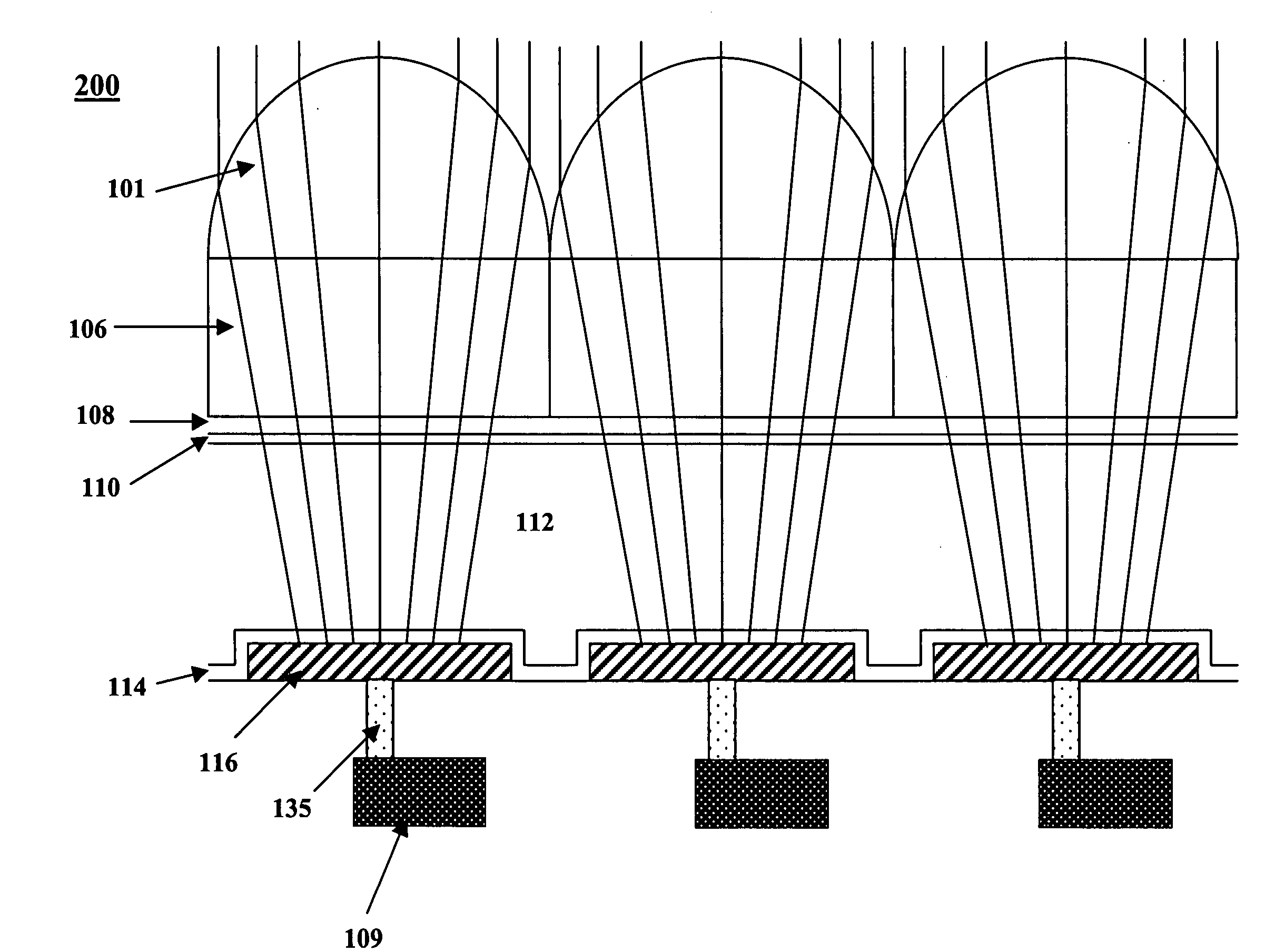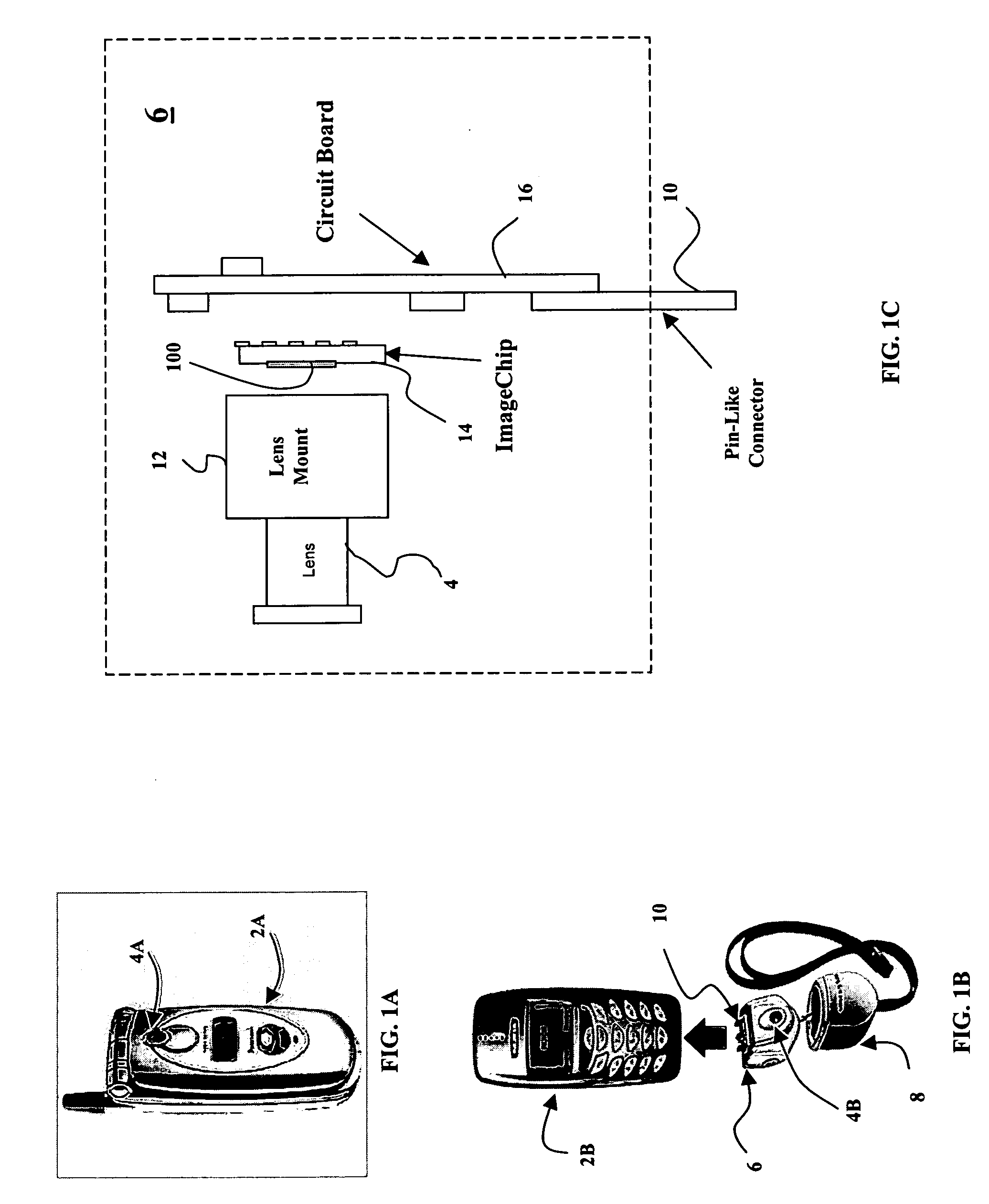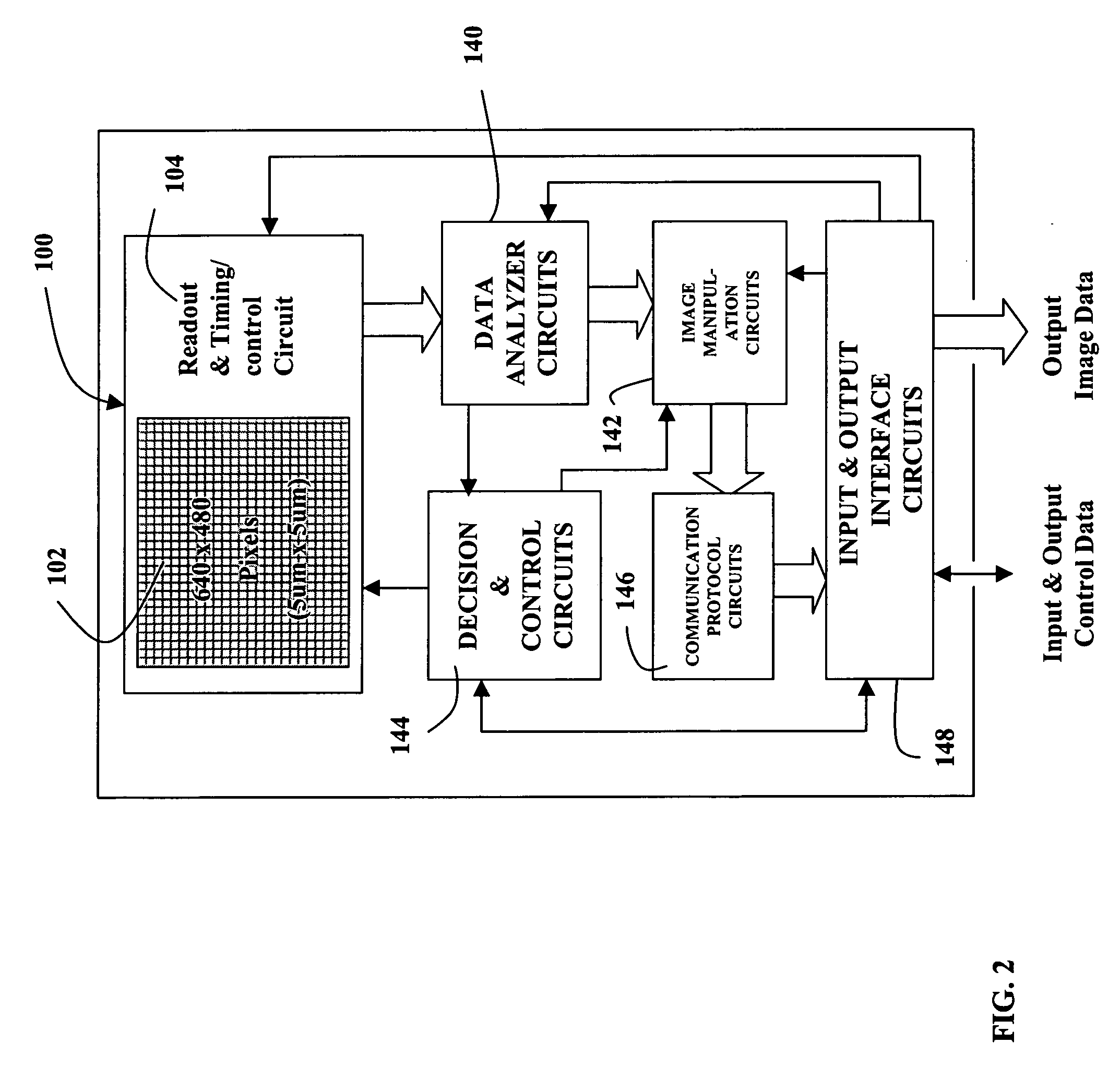MOS or CMOS sensor with micro-lens array
a micro-lens array and sensor technology, applied in the direction of electrical equipment, semiconductor devices, radio frequency controlled devices, etc., can solve the problems of high rail-to-rail voltage swing, large energy consumption of ccd sensors, and problems of today's mobile appliances, so as to minimize or eliminate pixel-to-pixel crosstalk, increase the electrical resistivity in the bottom layer, and reduce the effect of pixel-to-pixel crosstalk
- Summary
- Abstract
- Description
- Claims
- Application Information
AI Technical Summary
Benefits of technology
Problems solved by technology
Method used
Image
Examples
Embodiment Construction
[0024] In the following description of preferred embodiments, reference is made to the accompanying drawings, which form a part hereof, and which show by way of illustration a specific embodiment of the invention. It is to be understood by those of working skill in this technological field that other embodiments may be utilized, and structural, electrical, as well as procedural changes may be made without departing from the scope of the present invention.
Need to Avoid Crosstalk
[0025] CMOS sensors having a multi-layer photodiode layer covering an array of active pixel circuits are described in detail in the parent patent applications listed in the first sentence of this specification. This architecture permits pixel designs with extremely small pixels (measured in microns) with almost 100 percent packing factors. A potential problem with this architecture is the possibility of crosstalk. Charges generated above a particular pixel circuit in the multilayer photodiode layer can be dr...
PUM
 Login to View More
Login to View More Abstract
Description
Claims
Application Information
 Login to View More
Login to View More - R&D
- Intellectual Property
- Life Sciences
- Materials
- Tech Scout
- Unparalleled Data Quality
- Higher Quality Content
- 60% Fewer Hallucinations
Browse by: Latest US Patents, China's latest patents, Technical Efficacy Thesaurus, Application Domain, Technology Topic, Popular Technical Reports.
© 2025 PatSnap. All rights reserved.Legal|Privacy policy|Modern Slavery Act Transparency Statement|Sitemap|About US| Contact US: help@patsnap.com



